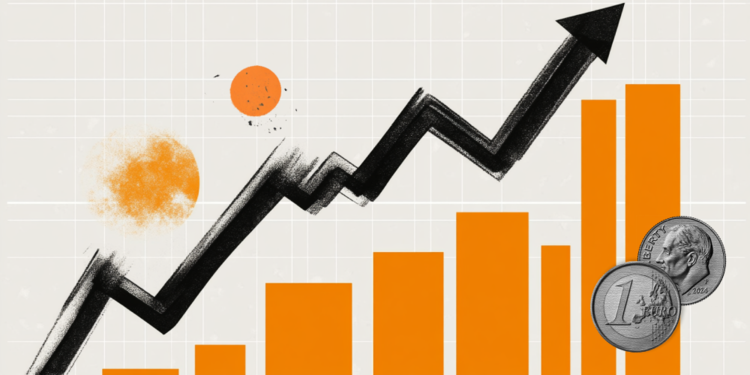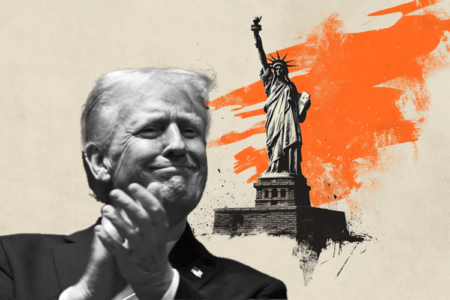- EUR/USD rebounds to near 1.0800 as the US Dollar corrects despite US President Trump threatening to impose large-scale tariffs on the Eurozone and Canada.
- Trump has imposed a 25% levy on imports of all automobiles and auto components.
- Investors await the US PCE inflation data, which will be released on Friday.
EUR/USD jumps to near 1.0800 in North American trading hours on Thursday. The major currency pair gains after a six-day losing streak despite deepening fears of a potential trade war between the United States (US) and the Eurozone. Fears of a trade war have escalated as the European Union (EU) prepares to announce retaliatory tariffs on the US against 25% auto tariffs imposed by President Donald Trump on Wednesday, which will come into effect on April 2.
“I can’t tell you exact timings for when our potential response to these still not implemented actions will come, but I can assure you that it will be timely, that it will be robust, that it will be well calibrated and that it will achieve the intended impact,” a spokesperson from the EU Commission said.
The German economy will be one of the major victims of the Trump’s tariffs on automobiles as it dispatches 13% of its total auto exports to the US. Such a scenario will dampen the outlook of the Euro (EUR).
Earlier in the day, President Donald Trump also threatened to impose large-scale tariffs on Canada and the Eurozone for devising plans to harm the US economy. “If the European Union (EU) works with Canada in order to do economic harm to the USA, large scale tariffs, far larger than currently planned, will be placed on them both in order to protect the best friend that each of those two countries has ever had,” Trump said in a post on Truth Social.
After Trump’s large-scale tariff threats, European Central Bank (ECB) policymaker and Belgian central bank Governor Pierre Wunsch said in his CNBC interview that tariffs would be bad for economic growth and boost inflationary pressures. “Inflation risks might be on the upside,” Wunsch said, but he ruled out the likelihood of an interest rate hike this year. Wunsch added, “a rate-cut pause in April should be on the table.” On the contrary, traders have become increasingly confident that the ECB could reduce interest rates again in April’s meeting amid deepening economic risks from the Trump-led tariff war.
Daily digest market movers: EUR/USD rebounds amid correction in US Dollar
- The recovery move in the EUR/USD pair is also driven by a decent correction in the US Dollar. The US Dollar Index (DXY) retraces from its three-week high of 104.65. The Greenback declines as investors expect that the impact of Trump’s tariff agenda will also be unfavorable for the domestic economy in the near term. The impact of costly products entering the US will be borne by importers who would have no other option than to pass them on to consumers. Such a scenario will be inflationary for the economy, which would dampen the purchasing power of households.
- Trump’s tariff policies have complicated the Federal Reserve’s (Fed) job. The Fed would be in a balancing act, as the possibility of higher inflation could force the central bank to maintain a restrictive monetary policy stance, and fears of slower economic growth prompt the need for an expansionary policy. Minneapolis Fed Bank President Neel Kashkari said at the Detroit Lakes Chamber Economic Summit on Wednesday that together, those forces are “kind of a wash”. He guided that the Fed should “just sit where we are for an extended period of time until we get clarity.”
- According to the CME FedWatch tool, the Fed is certain to keep interest rates steady in the current range of 4.25%-4.50% in the May policy meeting but see a 65.5% chance of a reduction in June.
- On the economic data front, Initial Jobless Claims for the week ending March 21 have come in at 224K, close to estimates and the former reading of 225K. The final estimate for the Q4 Gross Domestic Product (GDP) shows that the economy expanded at a faster pace of 2.4% compared to the revised estimate of 2.3%.
- Going forward, the major trigger for the US Dollar will be the US Personal Consumption Expenditure Price Index (PCE) data for February, which will be released on Friday. Economists expect the US core PCE inflation, which is the Fed’s preferred inflation gauge, to have grown at a faster pace of 2.7% year-on-year, compared to the 2.6% increase seen in January.
Technical Analysis: EUR/USD bounces back from three-week low near 1.0730
EUR/USD attracts bids after posting a fresh three-week low near 1.0730, which coincided with the 20-day Exponential Moving Average (EMA) earlier in the day.
The 14-day Relative Strength Index (RSI) cools down below 60.00, suggesting that the bullish momentum is over, but the upside bias remains intact.
Looking down, the December 6 high of 1.0630 will act as the major support zone for the pair. Conversely, the psychological level of 1.1000 will be the key barrier for the Euro bulls.
BRANDED CONTENT
Finding the right broker for trading EUR/USD is crucial, and we’ve identified the top choices for this major currency pair. Read about their unique features to make an informed decision.
Read the full article here
















